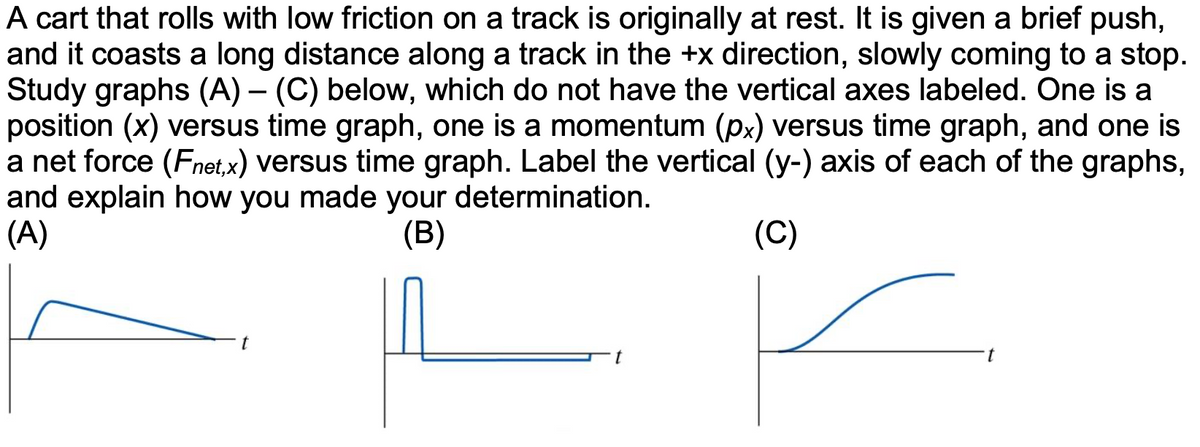A cart that rolls with low friction on a track is originally at rest. It is given a brief push, and it coasts a long distance along a track in the +x direction, slowly coming to a stop. Study graphs (A) - (C) below, which do not have the vertical axes labeled. One is a position (x) versus time graph, one is a momentum (px) versus time graph, and one is a net force (Fnet,x) versus time graph. Label the vertical (y-) axis of each of the graphs, and explain how you made your determination. (A) (B) (C) t
A cart that rolls with low friction on a track is originally at rest. It is given a brief push, and it coasts a long distance along a track in the +x direction, slowly coming to a stop. Study graphs (A) - (C) below, which do not have the vertical axes labeled. One is a position (x) versus time graph, one is a momentum (px) versus time graph, and one is a net force (Fnet,x) versus time graph. Label the vertical (y-) axis of each of the graphs, and explain how you made your determination. (A) (B) (C) t
Related questions
Question

Transcribed Image Text:A cart that rolls with low friction on a track is originally at rest. It is given a brief push,
and it coasts a long distance along a track in the +x direction, slowly coming to a stop.
Study graphs (A) - (C) below, which do not have the vertical axes labeled. One is a
position (x) versus time graph, one is a momentum (px) versus time graph, and one is
a net force (Fnet,x) versus time graph. Label the vertical (y-) axis of each of the graphs,
and explain how you made your determination.
(A)
(B)
(C)
t
Expert Solution
This question has been solved!
Explore an expertly crafted, step-by-step solution for a thorough understanding of key concepts.
This is a popular solution!
Trending now
This is a popular solution!
Step by step
Solved in 3 steps with 3 images
